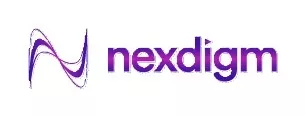- within Employment and HR, Government and Public Sector topic(s)
- Overview
- Due to proximity to key markets and depth of trading expertise in Singapore, a number of multinational groups have set up operations here to conduct commodity marketing and trading activities.
- To keep up with the international transfer pricing (TP) principles, the Singapore TP Regulations have been undergoing consistent evolution through the last few years. Right from the introduction of comprehensive TP guidelines in 2015, the Inland Revenue Authority of Singapore (IRAS) has been proactive in terms of publishing updates frequently; and recently in 2018, it published the fifth edition of TP Guidelines, which specifies the provisions relating to mandatory TP documentation and pertinent penalties for non-compliance with the guidelines.
- To address questions relating to the determination of arm’s length price for commodity marketing and trading companies (which constitute a significant portion of industry participants in Singapore), recently in May 2019, IRAS released special TP guidelines (e-Tax Guide) for entities, including branches set up in Singapore and engaged in commodity marketing/trading activities.
- The e-Tax Guide provides guidance on how to analyze the economic value of commodity marketing and trading activities in Singapore and assists taxpayers in complying with the arm’s length principle and transfer pricing documentation requirements when such activities are carried out with related parties.
- The e-Tax Guide highlights the economic benefits and customary features of conducting commodity marketing/trading activities and then outlines the various factors that may affect transfer pricing for these commodity marketing/trading activities. It also discusses the appropriate TP methods that may be applied.
- The guiding principles provided in this e-Tax guide are generally based on the OECD Guidelines and need to be read and applied along with the 2018 IRAS TP guidelines.
- Commercial Modalities of Commodity Marketing/Trading Entities in Singapore
- Commodity marketing and trading activities involve not just buying and selling commodities, but a wide spectrum of activities, such as sourcing, market research, managing logistics, sales and marketing, building and maintaining customer relationships, managing risks and cash flows, financial management, etc. From a trade environment standpoint, commodities broadly include "hard commodities" (e.g., metals), "soft commodities" (e.g., agricultural products), and "transformed commodities" (e.g., LGN).
- The e-Tax Guide broadly explains the
various types of Commodity Marketing/Trading Entities set up in
Singapore and their associated functions and risks -
- A risk stripped service provider providing limited functions, such as market research, etc.
- An entity acting as a sales agent for the related party (either risk-free or sharing risks with the related parties, depending on the arrangement between the parties)
- Low-risk buy-sell distributors
- Full risk-taking entrepreneurial entity performing value-added trading activities
- The e-Tax guide also states that the commodity marketing/trading entities may perform the various levels of functions and may face different types of risks, along with certain examples to help it understand practically. It states that the levels of functions performed, and risks borne should reflect in the compensation earned by the said entity appropriately.
- Furthermore, the e-Tax Guide highlights the contribution to the overall value chain and synergies achieved by the MNE group as a whole due to the setting up of Singapore-based commodity marketing/trading entities.
- Guidance on Transfer Pricing Methods
- While determining the arm’s length compensation for the commodity marketing/trading activities, taxpayers in Singapore should assess their contribution to the broader value chain in the multinational group, coupled with a thorough analysis of the functions performed, assets used, and risks assumed in each of the related-party commodity arrangement.
- The actual related party commodity
transaction, as accurately delineated, may be benchmarked using the
five methods set out in the e-Tax Guide as follows:
- Traditional transaction methods [Comparable Uncontrolled Price (CUP) method, Resale Price method and Cost-plus method];
- Transactional profits methods [Transactional profit split method, Transactional net margin method (TNMM) with profit level indicators (PLI) such as Operating profit margin (OM), Full cost mark-up, Value-added cost mark-up, Berry ratio, and Return on Asset]
- If circumstances render another method, other than the above five methods, to be more appropriate to establish the transfer price, then such other method can be used.
- Under the CUP method, the arm’s
length price for a related party commodity transaction may be
determined by reference to:
- Comparable independent party transactions; and
- Comparable independent party arrangements represented by the quoted price (quoted price CUP)
- IRAS recognizes the use of Resale Price method where the activities involve marketing operations, and as an industry practice, the independent parties performing comparable operations are also remunerated by reference to sales values and earn a percentage discount from a sales price.
- Notably, with respect to the application of cost-based transfer pricing methods or profit level indicators (i.e., Cost-plus method or TNMM with full cost mark-up), IRAS expresses caution for using them, unless the trading/marketing activities are akin to that delivered by a service provider, which do not require significant specialized expertise, risk assumption, or risk control function. In other words, the cost-based methods are unlikely to be considered as appropriate for buy-sell distributors or sophisticated trading operations.
- The reliability of cost-based transfer pricing methods may be reduced in case where the commodity marketing/trading activities performed by the commodity marketing/trading entity in a related party commodity transaction involve significant value, including decision-making capacity, the capacity to exercise authority, risks assumption or risk control functions. These activities affect business outcomes, and thus, their value to the related parties may correlate to the revenues or profits rather than costs.
- Furthermore, IRAS recognizes that a commodity marketing/trading entity and its related parties may have the ability to enter into more varied arrangements than the independent parties. They may have done so for sound business reasons. Thus, IRAS would not disregard a related party commodity transaction or replace it with an alternative transaction unless the transaction is commercially irrational.
- Transfer Pricing Documentation Requirements
- A commodity marketing/trading entity is required to prepare specific transfer pricing documentation for its related party transactions if it meets the conditions stated in the 2018 IRAS TP guidelines.
- The TP documentation requirements for commodity marketing/trading entity should be based on the 2018 TP Guidelines as well as additional information as specified in the e-Tax Guide such as contribution to value chain, reliable evidence and document to support the commodity marketing/trading entity’s assumption and management of risks, price setting policy, etc.
The content of this article is intended to provide a general guide to the subject matter. Specialist advice should be sought about your specific circumstances.
[View Source]

